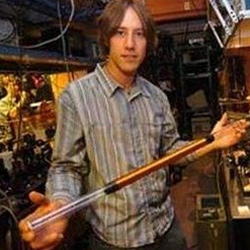
The study was conducted by a team of scientists at JILA, a joint institute of the National Institute of Standards and Technology and the University of Colorado at Boulder.
“This technique can give a broad picture of many different molecules in the breath all at once,” said lead researcher Jun Ye.
Incidentally, optical frequency comb spectroscopy was developed way back in the 1990s. Now, this study explains the potential use of the technology in detecting various diseases.
Each breath exhaled by a person contains more than a thousand different molecules, some of which may be indicators of disease. For example, excess levels of methylamine may indicate liver or kidney disease, ammonia may be a sign of renal failure, elevated acetone levels may indicate diabetes, and nitric oxide levels can be used to diagnose asthma.
In this study, Ye and colleagues used the technique to analyze the breaths of several volunteers. They exhaled into an optical cavity (a space between two mirrors) and a pulsed laser light was then aimed into the optical cavity. The laser light bounced back and forth between the mirrors, covering a distance of several kilometers by the time it exited the optical cavity. During this time, the laser light struck all the molecules within the cavity.
The scientists said that this technology will still need to be evaluated in clinical trials and could possibly offer a low-cost, rapid and non-invasive method of health screening.
